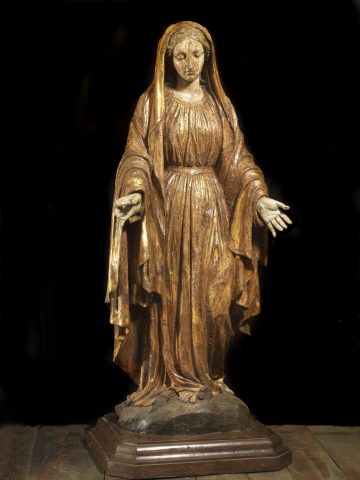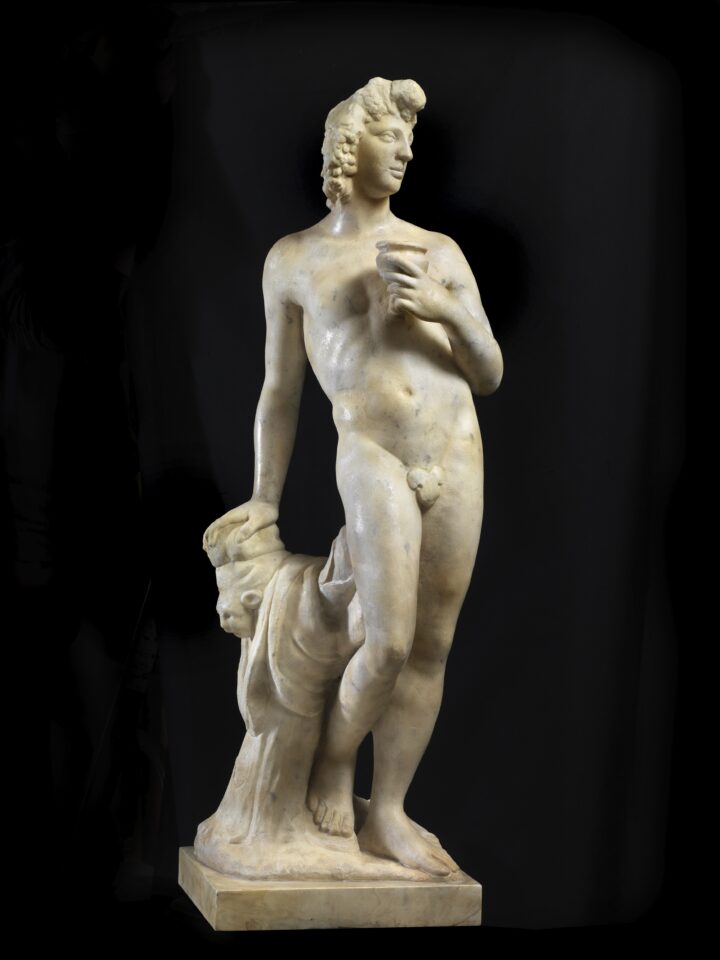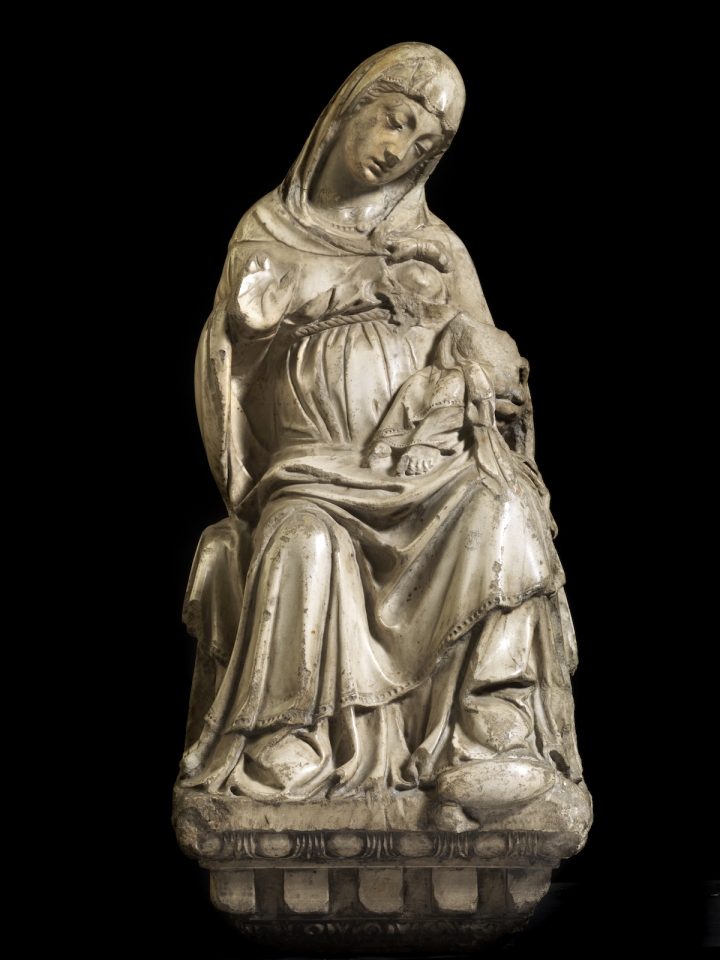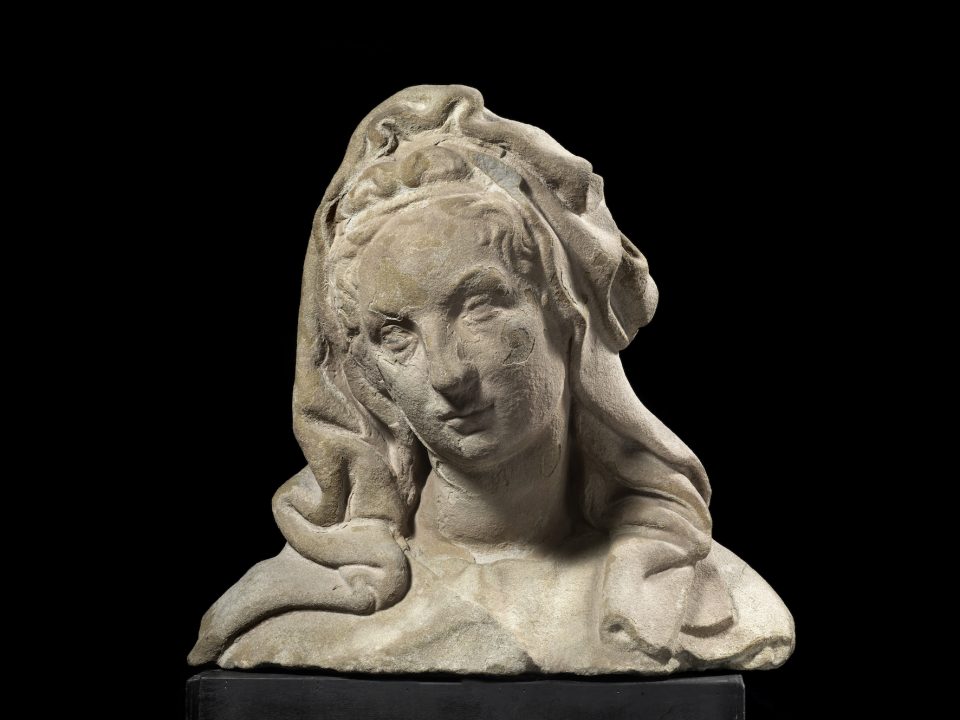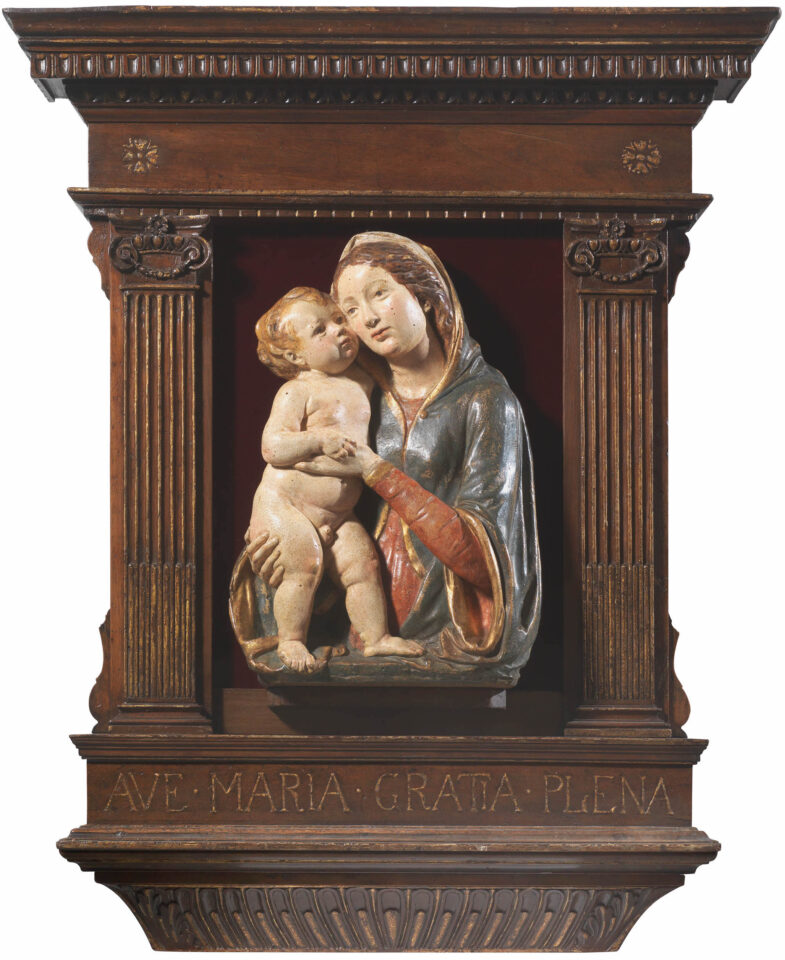ANTONELLO GAGINI, circle of
Palermo, 1478-1536
Madonna
dated: 1510 ca.
gilded and polychromed wood, cm 157 height
Her face framed by a sweetly descending veil, the Virgin is represented standing, her arms slightly spread about her hips, her eyes half-open with an ecstatic expression. Her tunic is tightened at the waist by a belt, so as to create a series of narrow parallel folds which break on the pedestal.
The fine modeling of the face and the accurate rendition of the drapery demonstrate familiarity with the novelties of fifteenth-century Central Italian sculpture, where classical elements from the tradition of ancient sculpture were turned into a new plasticity, defined by expanded volumes in the surrounding space.
An aggregate of extremely complex elements coexists in this sculpture; in addition to the Tuscan influence, we may observe a skillful use of color and gilding of Spanish origin, and complex draperies inspired by the Lombard style. These elements were found together since the early years of the Fifteenth century in the cultural milieus of Southern Italy, as in the works of Giovanni da Nola (1488-1558) and in particular those of Antonello Gagini; it is with the works of the latter that we find most parallels.
This Madonna, which seems to have been conceived for observation from a lower standpoint, was probably the visual culmination of a liturgical aggregate on a large and precious wooden altar.

